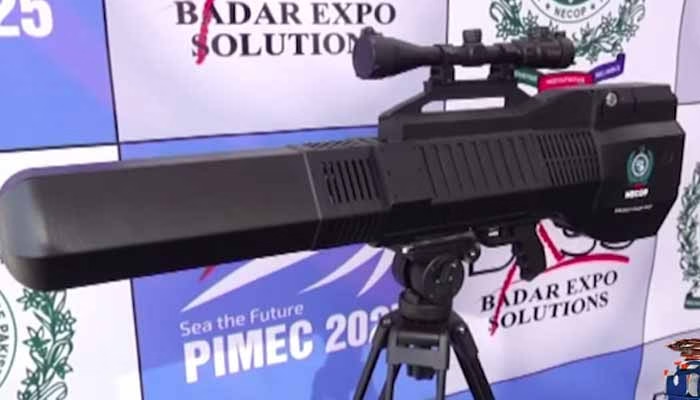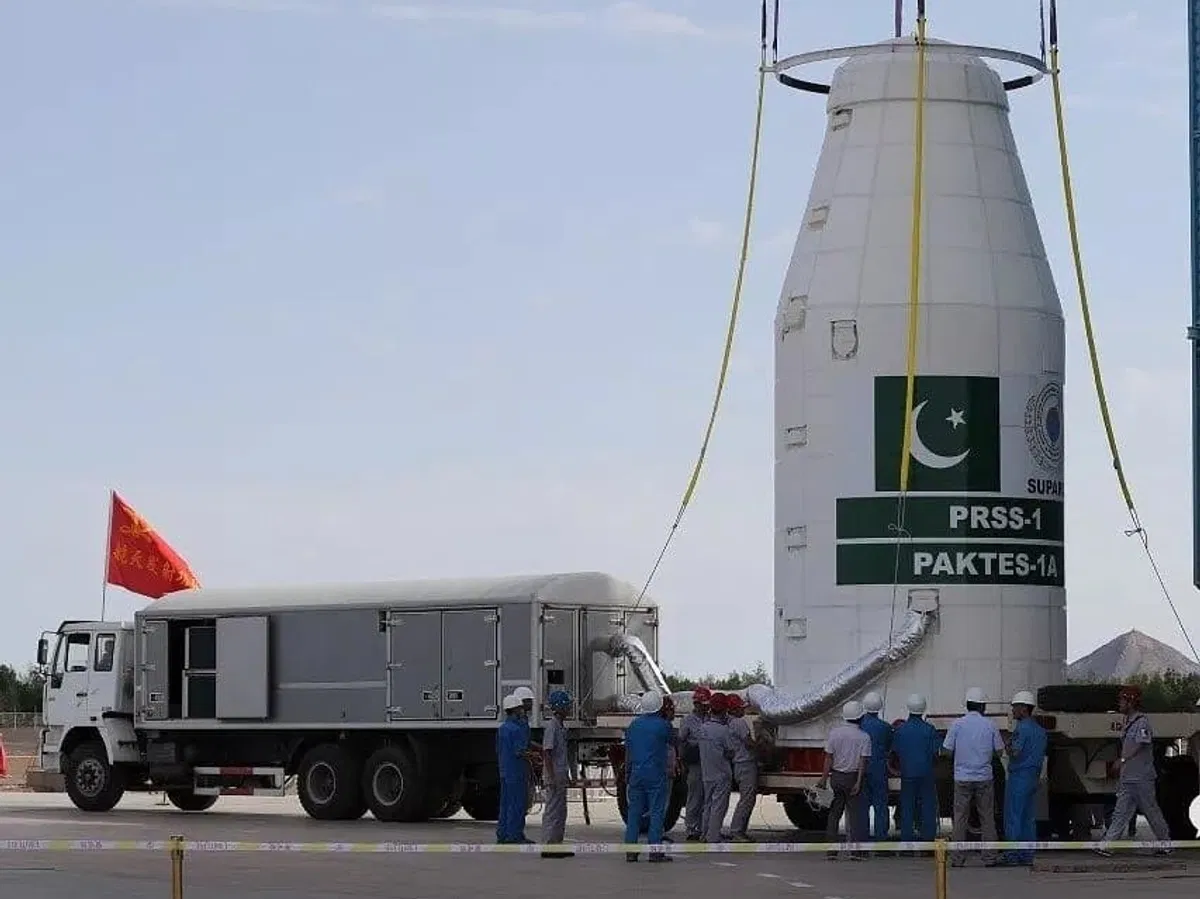Pakistan has taken a major step toward strengthening its defense capabilities with the introduction of the Sufra drone jamming gun, a new countermeasure designed to neutralise cross-border suicide drones and other aerial threats. As modern warfare increasingly shifts toward unmanned systems, this technology marks a significant milestone in the country’s ability to safeguard both its borders and civilian spaces.
The Sufra drone jamming gun was unveiled at the Karachi Maritime Expo, where officials demonstrated how it disables hostile drones from a distance of up to 1.5 kilometres. The device has been developed by the National Electronics Complex, a local institution working to equip Pakistan with advanced electronic warfare tools. Its introduction comes at a time when many nations are grappling with the growing threat of kamikaze drones, low-cost weapons that can strike with precision and cause substantial damage.
One of the most impressive aspects of the Sufra drone jamming gun is its operational design. According to engineers involved in the project, the gun operates within a 30-degree field, which can be adjusted based on tactical needs. This adjustability ensures that security forces can rely on the device in both wide-area and narrow-focus defensive scenarios. Whether deployed along border regions or used to secure major public gatherings, its versatility makes it an essential asset in Pakistan’s modern defense strategy.
The technology behind the Sufra drone jamming gun enables it to disrupt communication between a drone and its operator. Once the connection is interfered with, the system can either force the drone to land or disable its controls entirely. This dual capability allows security personnel to choose between recovering the drone for intelligence purposes or neutralising it outright when the threat level is high. In both cases, the primary goal is to prevent the drone from reaching its intended target.
As drone warfare evolves, saturation attacks—where multiple drones are launched simultaneously—have become a growing concern for military planners worldwide. Manufacturers of the Sufra drone jamming gun claim that the system has been designed to respond effectively to such situations. This means that even if several hostile drones approach at once, the device can target and neutralise them, reducing the risk of any drone breaching the defensive perimeter. Such capability is critical in modern conflict zones where cheap, expendable drones can be deployed in large numbers.
Another advantage of the Sufra drone jamming gun is its ease of deployment. Officials have suggested that the device can be installed along border fences, hilltops, checkpoints, and other strategic locations. In urban settings, it can be positioned at stadiums, political rallies, festivals, or religious events where the risk of drone-based attacks is elevated. The ability to secure both military and civilian spaces makes this technology especially valuable in a security environment where threats can emerge unpredictably.
Pakistan’s development of the Sufra drone jamming gun also reflects a growing global trend. Countries around the world are investing heavily in counter-drone systems as unmanned platforms become more accessible and widely used. What sets Pakistan’s approach apart is the emphasis on local production. By manufacturing this system domestically, the country reduces its reliance on foreign suppliers and gains the ability to improve and upgrade the technology based on real-world feedback.
Furthermore, local production has significant long-term benefits. It opens opportunities for research collaboration, defence exports, and the creation of specialised jobs within the technology sector. As threats continue to evolve, having indigenous capability gives Pakistan the freedom to innovate quickly without waiting for international approvals or imports.
While the Sufra drone jamming gun is primarily a defensive tool, its introduction sends a strong message: Pakistan is prepared to counter modern aerial threats with modern solutions. The device not only boosts national security but also reassures citizens and stakeholders that protective measures are advancing alongside emerging technologies.
In addition to military applications, this technology may eventually support civilian fields such as airport security, critical infrastructure protection, and VIP event management. The growing number of drones in commercial and recreational use means that robust counter-drone laws and systems will become increasingly important. Tools like the Sufra drone jamming gun could help authorities regulate airspace more effectively and prevent misuse of drones in densely populated areas.
As countries worldwide witness the impact of drone-based warfare, Pakistan’s development of this system demonstrates foresight and technological maturity. By addressing both present and future threats, the Sufra drone jamming gun stands as a crucial component of the nation’s evolving defense ecosystem.



